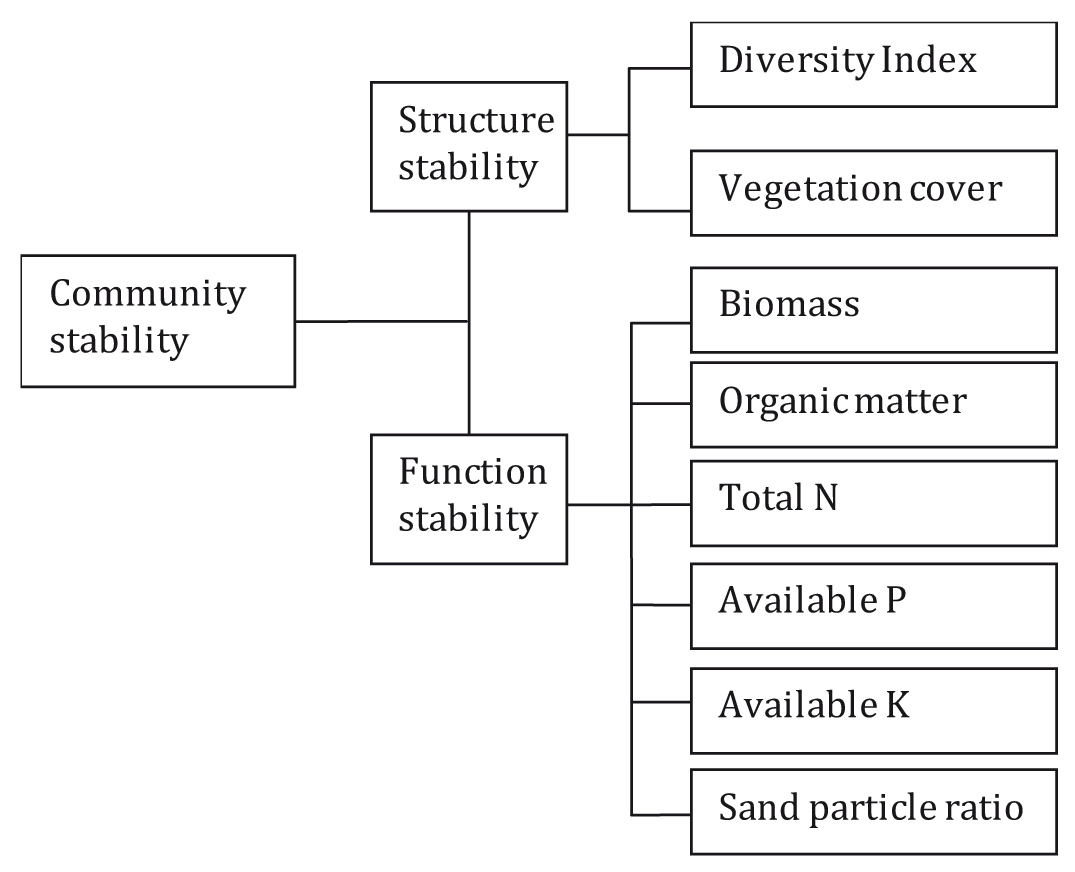The stability of various community types in sand dune ecosystems of northeastern China
Keywords:
Artemisia halodendron, analytic hierarchy process, Caragana microphylla, sand dunes, stability indicatorsAbstract
The stability of artificial, sand-binding communities has not yet fully studied. A similarity index was developed to evaluate the stability of artificial communities in shifting and semi-fixed sand dunes. This similarity index consisted of 8 indicators (i.e., vegetation cover, Shannon-Wiener Index, biomass, organic matter, Total N, available P and K, and sand particle ratio). The relative weight of these indicators was obtainedusing an analytic hierarchy process (AHP) method. Stability was compared on Artemisia halodendron Turczaninow ex Besser, Bull communities in shifting and semifixed sand dunes, and of Caragana microphylla Lam. communities with different planting ages. The similarity indexes of the A. halodendron communities were 0.24 and 0.54 in shifting and semi-fixed sand dunes, respectively. The peak stability of C. microphylla communities was 0.55, and it was reached when these communities were 20-year-old. It is suggested that A. halodendron communities should be planted preferentially in semi-fixed to moving sand dunes. Furthermore, the planting age of artificial communities should be included in planting programs. This study improved the understanding of some mechanisms contributing to maintain community stability, and is critical for guiding the artificial planting in sand dunes.
Downloads

Downloads
Published
How to Cite
Issue
Section
License
Aquellos autores/as que tengan publicaciones con esta revista, aceptan las Políticas Editoriales.










.jpg)




